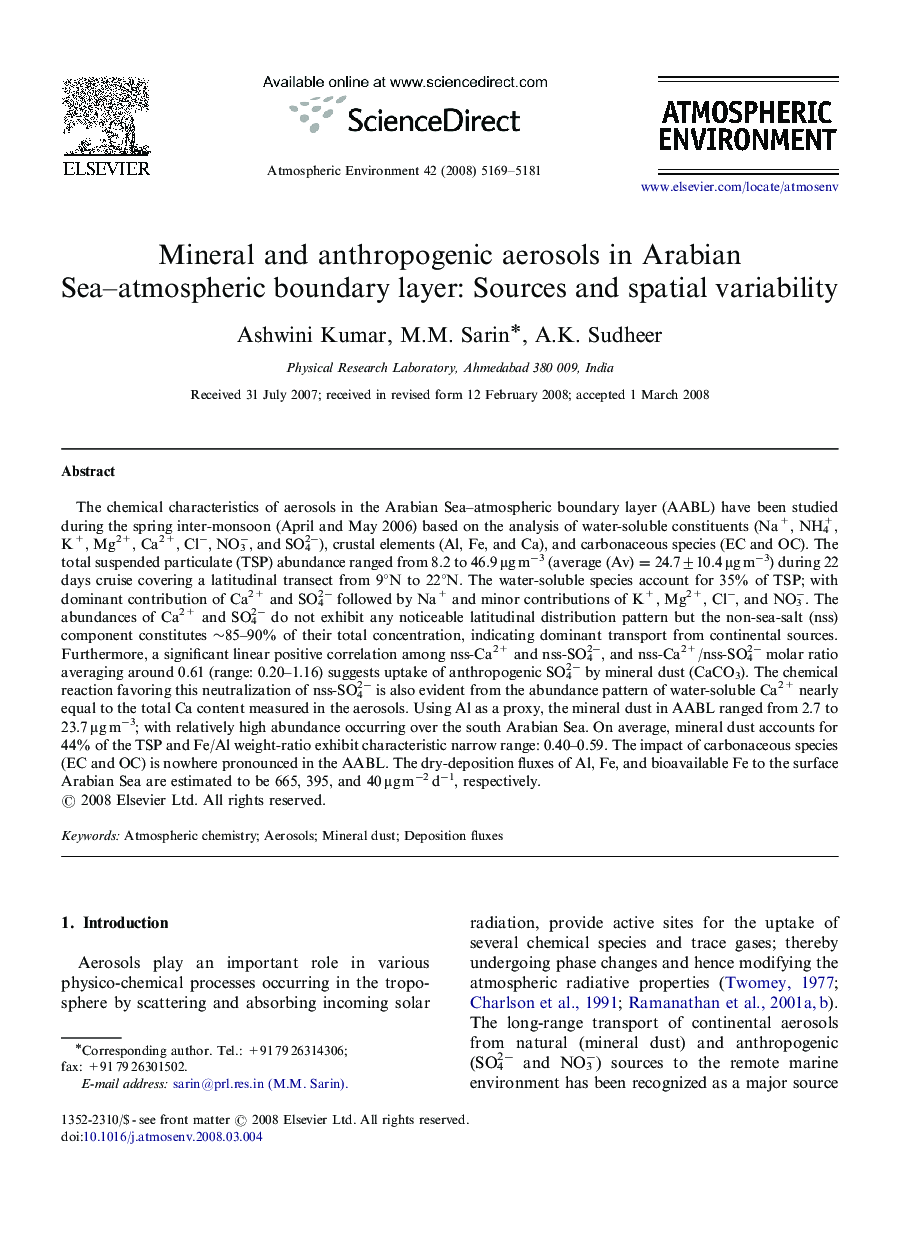| کد مقاله | کد نشریه | سال انتشار | مقاله انگلیسی | نسخه تمام متن |
|---|---|---|---|---|
| 4442724 | 1311164 | 2008 | 13 صفحه PDF | دانلود رایگان |

The chemical characteristics of aerosols in the Arabian Sea–atmospheric boundary layer (AABL) have been studied during the spring inter-monsoon (April and May 2006) based on the analysis of water-soluble constituents (Na+, NH4+, K+, Mg2+, Ca2+, Cl−, NO3−, and SO42−), crustal elements (Al, Fe, and Ca), and carbonaceous species (EC and OC). The total suspended particulate (TSP) abundance ranged from 8.2 to 46.9 μg m−3 (average (Av)=24.7±10.4 μg m−3) during 22 days cruise covering a latitudinal transect from 9°N to 22°N. The water-soluble species account for 35% of TSP; with dominant contribution of Ca2+ and SO42− followed by Na+ and minor contributions of K+, Mg2+, Cl−, and NO3−. The abundances of Ca2+ and SO42− do not exhibit any noticeable latitudinal distribution pattern but the non-sea-salt (nss) component constitutes ∼85–90% of their total concentration, indicating dominant transport from continental sources. Furthermore, a significant linear positive correlation among nss-Ca2+ and nss-SO42−, and nss-Ca2+/nss-SO42− molar ratio averaging around 0.61 (range: 0.20–1.16) suggests uptake of anthropogenic SO42− by mineral dust (CaCO3). The chemical reaction favoring this neutralization of nss-SO42− is also evident from the abundance pattern of water-soluble Ca2+ nearly equal to the total Ca content measured in the aerosols. Using Al as a proxy, the mineral dust in AABL ranged from 2.7 to 23.7 μg m−3; with relatively high abundance occurring over the south Arabian Sea. On average, mineral dust accounts for 44% of the TSP and Fe/Al weight-ratio exhibit characteristic narrow range: 0.40–0.59. The impact of carbonaceous species (EC and OC) is nowhere pronounced in the AABL. The dry-deposition fluxes of Al, Fe, and bioavailable Fe to the surface Arabian Sea are estimated to be 665, 395, and 40 μg m−2 d−1, respectively.
Journal: Atmospheric Environment - Volume 42, Issue 21, July 2008, Pages 5169–5181